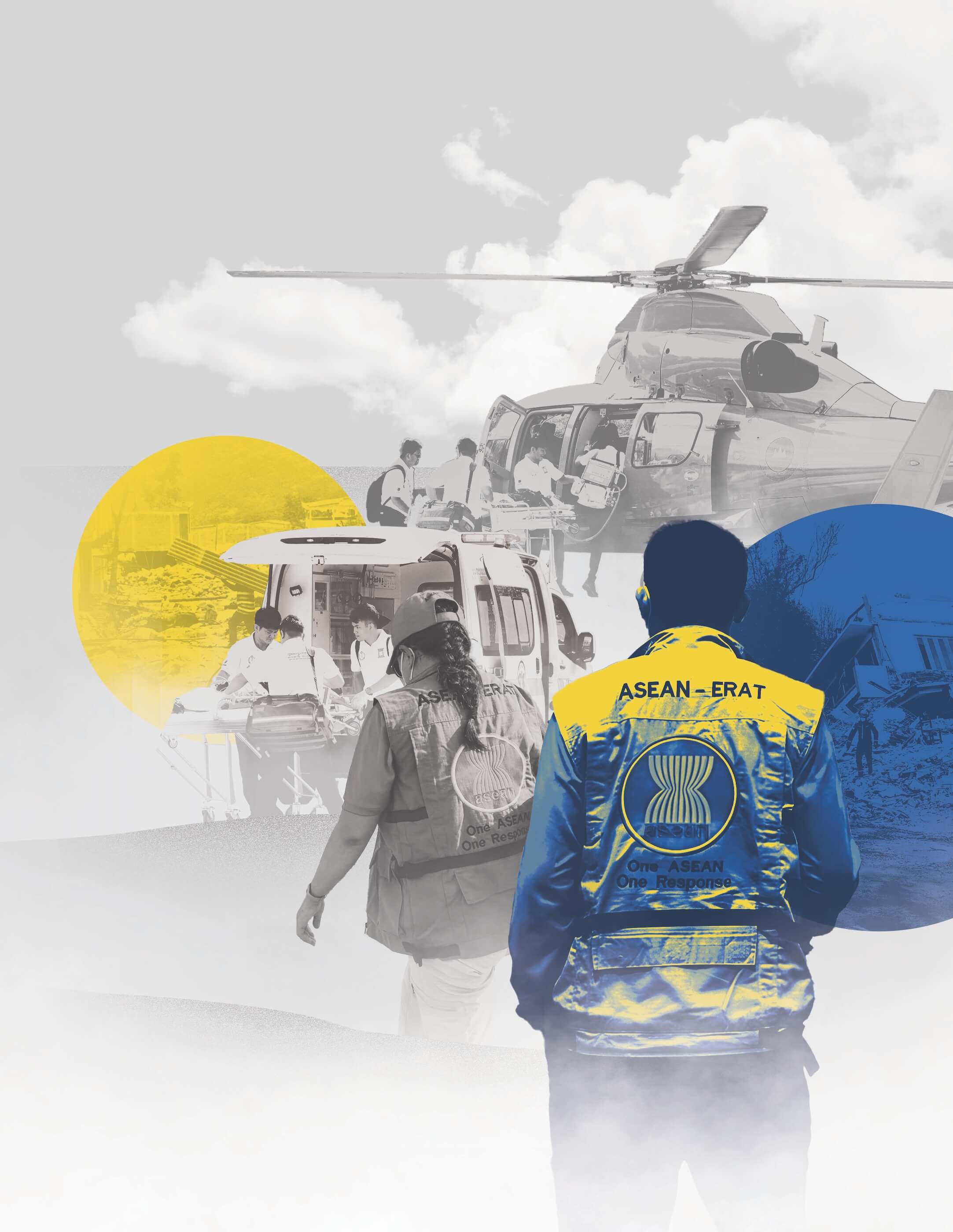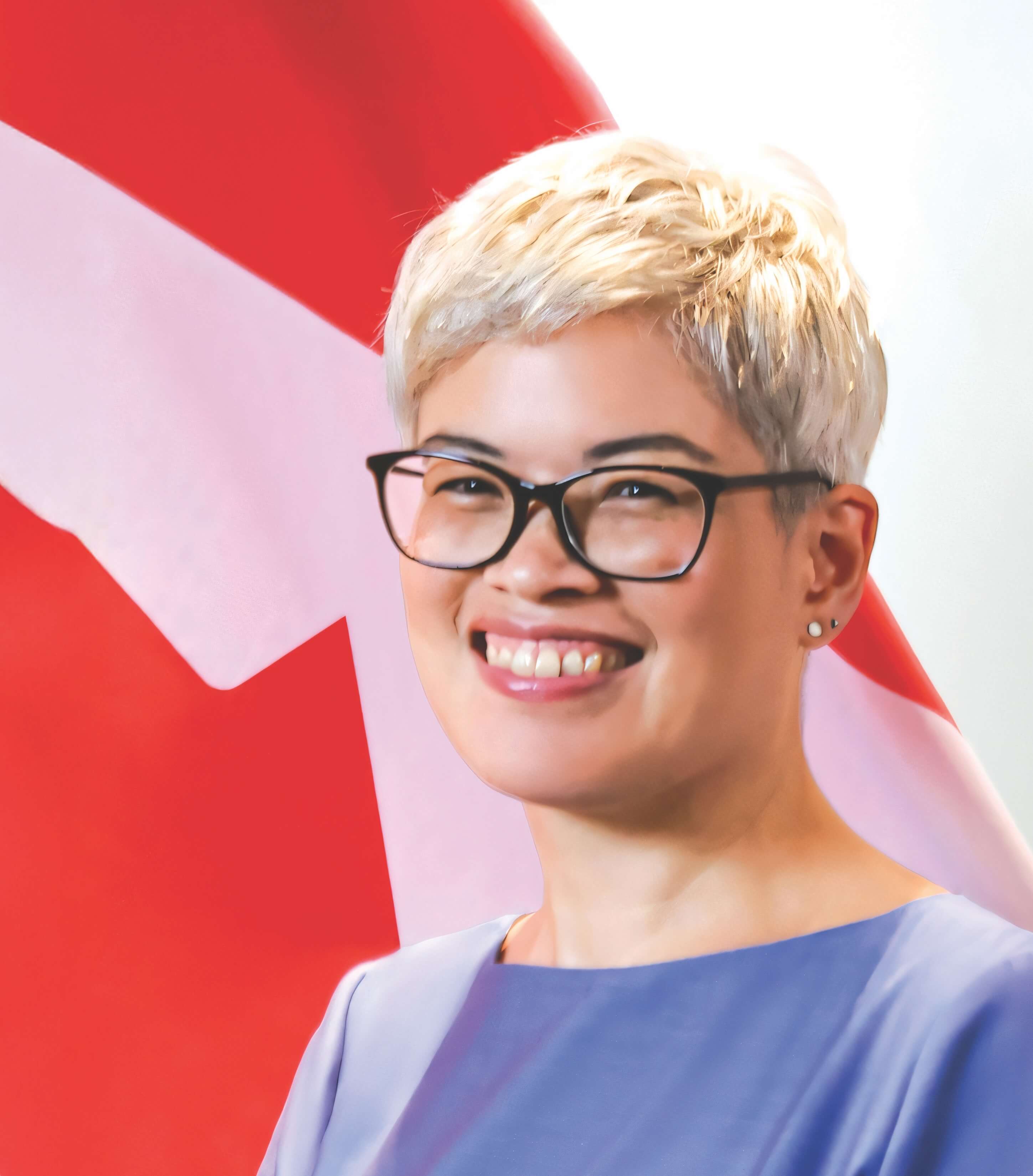


What are the ASEAN Enabling Masterplan’s primary objectives, and how does the master plan align with the broader strategic goals of ASEAN?
The ASEAN Enabling Masterplan 2025, adopted by ASEAN Leaders at the 33rd ASEAN Summit in November 2018, marking a major milestone in ASEAN’s journey towards creating a truly inclusive community. This master plan is the result of a collaborative, cross-pillar effort involving various ASEAN bodies and entities, all working together to realise ASEAN’s commitment to building a region where persons with disabilities can fully exercise their independence and freedom of choice and participate actively in all aspects of life.
To truly understand the significance of the Enabling Masterplan, it is important to view it as more than just a policy document. It is a game-changer designed to promote and protect the rights of persons with disabilities across the ASEAN region. The Enabling Masterplan is instrumental in addressing disability rights and serves as a framework for embedding these rights into the fabric of ASEAN’s core pillars— the Political-Security Community, the Economic Community, and the Socio- Cultural Community.
The Enabling Masterplan aims to transform the region by promoting inclusion and accessibility for persons with disabilities in every sector—from education and healthcare to employment and social protection. It calls on ASEAN Member States to develop comprehensive policies that guarantee equitable opportunities and services, creating societies where persons with disabilities are included and empowered to participate fully in all aspects of life. It is about removing barriers and dismantling outdated perceptions, allowing persons with disabilities to thrive politically, economically, and culturally.
One of the most compelling aspects of the Enabling Masterplan is its capacity to elevate regional cooperation to new heights. It helps to accelerate the implementation of the United Nations Convention on the Rights of Persons with Disabilities (CRPD), further showcasing ASEAN’s strong commitment to building an inclusive community by 2025. Moreover, by fostering partnerships between governments, the private sector, and civil society, the master plan paves the way for collaboration that can extend beyond national borders, transforming the entire region.
What is particularly noteworthy is that the Enabling Masterplan is not just about ASEAN’s current vision—it is forward-looking and closely aligned with the 2030 Agenda for Sustainable Development. It lays a solid foundation for ASEAN’s future, ensuring that inclusivity remains at the heart of the region’s development. The idea of a “people-oriented” ASEAN Community is central, and this master plan brings that vision closer to reality. Inclusion is no longer a lofty goal; it is becoming a defining principle for the ASEAN Community Vision 2045 and the ASCC Strategic Plan Post-2025.
The master plan is not an isolated initiative. It seamlessly integrates into ASEAN’s broader strategic goals, advocating for sustainable growth, social cohesion, and inclusive development. Its 76 key action points reflect ASEAN’s commitment to mainstreaming disability inclusion across all sectors. In essence, the Enabling Masterplan represents a decisive step forward in building an ASEAN Community where no one is left behind, supporting a future that is as inclusive as it is prosperous.
In a nutshell, the Enabling Masterplan goes beyond just policy; it embodies a shared vision of an inclusive ASEAN where every individual, regardless of ability, is allowed to thrive. By integrating disability rights into the ASEAN agenda, this initiative lays the groundwork for sustained change, ensuring that persons with disabilities are represented and empowered to contribute meaningfully to society. It is about breaking down barriers and building a community that leaves no one behind, reflecting ASEAN’s bold commitment to equality, dignity, and inclusion for all.
What specific strategies have been implemented to protect the rights of persons with disabilities and promote their social inclusion across ASEAN Member States?
ASEAN has implemented several key strategies to protect the rights of persons with disabilities and promote their social inclusion. One significant step is the annual report on the progress of the ASEAN Enabling Masterplan 2025, which is presented to the Joint Consultative Meeting (JCM) and the ASEAN Ministerial Meeting on Social Welfare and Development (AMMSWD). This report ensures cross-pillar coordination among ASEAN bodies.
From 2018-2019, efforts focused on raising awareness and building capacity for the effective implementation of the master plan. While the COVID-19 pandemic disrupted these efforts, it also highlighted the heightened risks faced by persons with disabilities, accelerating awareness and the need for inclusive recovery measures.
The ASEAN Comprehensive Recovery Framework (ACRF), adopted in 2020, places inclusivity at the heart of ASEAN’s COVID-19 recovery strategy. Under Broad Strategy 2, the ACRF strengthened social protection, integrating the welfare of persons with disabilities into all recovery plans.
ASEAN also works closely with organisations like the ASEAN Disability Forum (ADF) and the ASEAN General Election Network for Disability Access (AGENDA) to advance disability inclusion. Additionally, ASEAN endorsed the ASEAN Autism Network (AAN) and collaborates with the Asia-Pacific Development Center on Disability (APCD) on projects such as the Autism Mapping Project.
These partnerships reflect ASEAN’s commitment to the principle of “nothing about us without us,” ensuring persons with disabilities are actively involved in shaping policies. Ongoing efforts focus on embedding disability rights into ASEAN’s sectoral work plans, supporting digital inclusion, and addressing disability-related human rights in public health emergencies.
The mid-term review of the ASEAN Enabling Masterplan 2025 marks a pivotal moment in assessing progress across the region in promoting the rights and social inclusion of persons with disabilities. While the review highlights significant achievements by ASEAN Member States, progress has been mixed, with some countries advancing more quickly than others. Several Member States have completed over 80 per cent of the key action points, particularly in developing enabling legal and policy frameworks aligned with the UN Convention on the Rights of Persons with Disabilities. Additionally, many countries have launched awareness campaigns and established coordination mechanisms to support implementation.
In Malaysia, we are committed to ensuring that persons with disabilities enjoy the same rights and opportunities as all citizens. The government established the Department for the Development of Persons with Disabilities, responsible for registration, protection, rehabilitation, and overall well-being. The Persons with Disabilities Act 2008 provides the legal framework for these efforts.
A significant milestone in Malaysia’s disability rights movement is appointing persons with disabilities as Senators in the Upper House of Parliament. Currently, Senator Isaiah Jacob, who has physical disabilities, serves as the fourth Senator representing the community. Senator Jacob’s appointment helps to ensure the voices of persons with disabilities are heard at the highest levels of decision-making.
Furthermore, two persons with disabilities have been appointed to the National Council for Persons with Disabilities. This council monitors the implementation of national policies and makes recommendations on matters such as support, care, protection, and development. These platforms ensure that persons disabilities are actively contributing to shaping the nation’s future.
How are ASEAN Member States coordinating their cross-sectoral efforts to achieve the goals outlined in the master plan, and what mechanisms are in place to facilitate this coordination?
Minister Dato’ Sri Hajah Nancy Shukri:
ASEAN Member States are working closely across sectors to achieve the goals of the ASEAN Enabling Masterplan 2025, guided by coordinated leadership and ongoing monitoring. The Senior Officials Meeting on Social Welfare and Development (SOMSWD) plays a crucial role in leading efforts to improve the quality of life for persons with disabilities and ensuring that their rights are integrated across all sectors.
Since 2018, the ASEAN Secretariat has supported SOMSWD by preparing annual progress reports, which track the implementation of the 76 Key Action Points across the three ASEAN Community pillars. These reports highlight initiatives by various ASEAN Sectoral Bodies, ensuring continuous cross-pillar collaboration. The Fifth Report will be presented to the ASEAN Coordination Council (ACC) and the AMMSWD, reinforcing the master plan’s commitment to a disability-inclusive ASEAN.
The master plan’s implementation is driven by the principle “nothing about us without us,” ensuring meaningful engagement with persons with disabilities and their representative organisations. In 2021, SOMSWD and AMMSWD endorsed a Results-Based Monitoring and Evaluation Framework, allowing ASEAN to measure progress effectively. This framework is essential in steering regional cooperation and embedding disability inclusion into sectoral work plans and regional frameworks.
SOMSWD’s leadership has been key in advancing disability rights through targeted initiatives and mainstreaming efforts. These initiatives align with broader regional goals, addressing multiple vulnerabilities, including those faced by women, children, older persons, and persons with disabilities.
There is also a growing space for collaboration with ASEAN Dialogue Partners, development organisations, and civil society, especially organisations of persons with disabilities, across the three pillars of ASEAN. The ongoing evaluation of the master plan creates opportunities for stronger partnerships at both regional and national levels, ensuring a disability-inclusive future for ASEAN.
What insights have been gained from the self-assessment review of national plans and policies by ASEAN Member States? Why was this self-assessment critical for reviewing the progress of the Enabling Masterplan?
The self-assessment review of national plans and policies by the ASEAN Member States has provided valuable insights into the progress and challenges of implementing the ASEAN Enabling Masterplan 2025. One of the key insights gained is the significant variation in the level of progress across different Member States. While some countries have made substantial strides, particularly in areas such as legal frameworks and policy alignment with the UN Convention on the Rights of Persons with Disabilities, others are still in the early stages of mainstreaming disability rights and inclusion. This diversity in progress highlights the need for tailored approaches that consider each country’s unique context, resources, and capacities.
Another important takeaway is the critical role of multi-stakeholder collaboration. Countries that have successfully institutionalised coordination mechanisms involving government bodies, organisations of persons with disabilities, and private sector stakeholders have demonstrated more effective implementation of the master plan. This underscores the importance of having an inclusive, multi-sectoral platform for pooling resources, sharing best practices, and fostering accountability.
The self-assessment has also revealed gaps in awareness, particularly at the grassroots level and in remote areas, where infrastructure and services for persons with disabilities remain limited. This indicates that more efforts are needed to raise awareness and build local capacity, ensuring that inclusion principles are embedded throughout all sectors of society.
The self-assessment review was critical for several reasons. First, it provided an evidence-based evaluation of how well the Enabling Masterplan is being implemented, allowing Member States to identify areas of strength and areas requiring improvement. It also ensured that the review process was grounded in the realities of each country rather than solely based on regional or top-down perspectives. This review helped capture the actual progress, challenges, and evolving needs, providing a clear picture of what has been achieved and what still needs to be done.
Furthermore, the self-assessment allowed for more honest and transparent reflections, mainly because it involved the organisations of persons with disabilities directly in the process. This inclusivity ensured that the feedback was more objective and reflective of the lived experiences of persons with disabilities. As the Enabling Masterplan approaches its 2025 target, the insights from the self-assessment are vital for shaping post-2025 strategies and ensuring that future initiatives are informed by real progress and challenges.
Why is it important to include persons with disabilities and their organisations in the review process? What role does the private sector play in promoting disability inclusion?
Including persons with disabilities and their organisations in the review process is absolutely crucial. They are the best judges of how well their rights are being upheld and empowered, and their feedback directly reflects the effectiveness of government initiatives.
In Malaysia, for instance, the National Consultant appointed for the self-assessment of the ASEAN Enabling Masterplan 2025 is Wong Yoon Loong, a person with a disability from the National Council for the Blind who is also active at various regional platforms championing the agenda related to persons with disabilities. This involvement ensures that the recommendations are honest, transparent, and objective, offering a genuine reflection of the community’s needs and experiences. Moreover, engaging organisations of persons with disabilities also promotes the principle of “nothing about us without us,” as mentioned previously, ensuring that their perspectives are fully integrated into decision-making and implementation. This inclusion helps governments and policymakers create more effective, targeted solutions that address real gaps in the system.
Meanwhile, the private sector also plays a key role in promoting disability inclusion. Their involvement brings additional financial, technical, and human resources, which can bridge gaps in government funding and support. For example, Malaysia Airports Berhad’s “Butterfly Effect” programme enhances the travel experience for passengers with disabilities, offering calm rooms, sensory walls, and special kits at Kuala Lumpur International Airport (KLIA).
Moreover, the government’s “job coaching” programme helps integrate persons with disabilities into the workforce by matching them with suitable jobs and advising employers on necessary accommodations, such as transportation and a conducive work environment. Over 3,000 job coaches have been trained, and companies like Mydin, Aeon, KFC, Lotus, and Uniqlo have participated. To date, job coaches have helped facilitate the employment of over 1,600 persons with disabilities across 1,000 private companies.
Collaboration between the government, persons with disabilities, and the private sector is critical to creating an inclusive society. This collective effort ensures that disability inclusion becomes a reality in all aspects of life—from policy development to employment opportunities. Such collaboration can bridge gaps in budget allocation and resource mobilisation, ensuring that disability inclusion is not only a government-driven effort but a collective responsibility across all sectors of society.
What lessons have been learned from implementing the Enabling Masterplan that could inform future ASEAN initiatives?
From our experience implementing the ASEAN Enabling Masterplan 2025, several key lessons have emerged that can guide future ASEAN initiatives.
While we are making progress in promoting the rights and needs of persons with disabilities, the journey is far from over, especially when it comes to embedding this awareness at the grassroots level, particularly in remote areas. One of the standout lessons is the critical need to institutionalise a national-level coordination platform. Such a platform would pool resources, harmonise priorities, and enforce shared responsibility across all sectors and ministries. This would ensure a more consistent, disability-inclusive approach to development.
Currently, the emphasis on disability inclusion varies across ministries and agencies. Some sectors are more deeply immersed in understanding the needs of persons with disabilities than others. This inconsistency shows us that a cross-sectoral, inter-ministerial approach is vital. Future ASEAN initiatives would benefit from this lesson by promoting a unified understanding and commitment across all levels of government and sectors.
A holistic, multi-stakeholder approach, as applied during the master plan implementation, could serve as a blueprint for future ASEAN projects. By fostering collaboration between governments, civil society, and the private sector, we ensure that solutions are inclusive and sustainable.
In addition, the iterative learning process—which includes continuous review and adaptation—should be at the core of ASEAN’s future work. For example, leveraging the results of the self-assessment reviews conducted by Member States and using them to develop targeted action plans will provide a roadmap for post-2025 initiatives. This will help ensure that future interventions are informed by the actual progress and challenges faced in promoting disability inclusion.
Another crucial takeaway is the need for bold, perhaps even radical, measures to ensure that the resources, commitment, and political will are available to champion this agenda fully. Without adequate funding, human resources, and technical expertise, the progress we have achieved could stall. Future ASEAN initiatives must be built on strong, well-resourced foundations to ensure we create truly inclusive societies for persons with disabilities.
In summary, a coordinated, multi-sectoral approach, continuous learning, and resource mobilisation are key pillars that should inform future ASEAN efforts to promote inclusivity and protect the rights of persons with disabilities.








